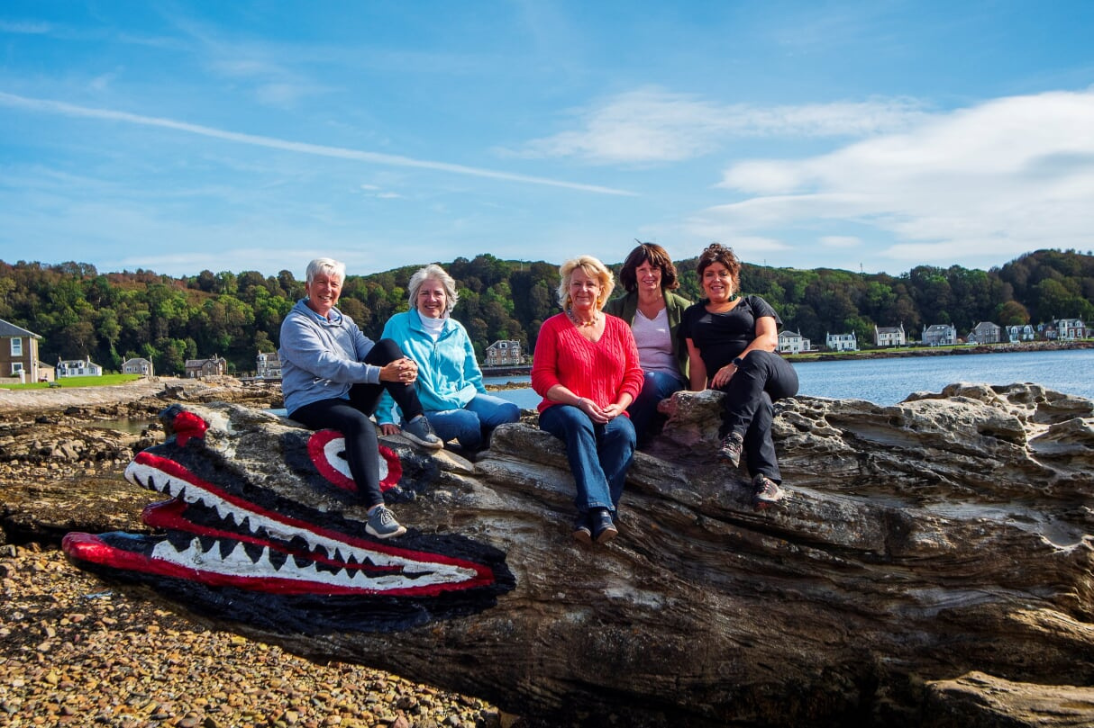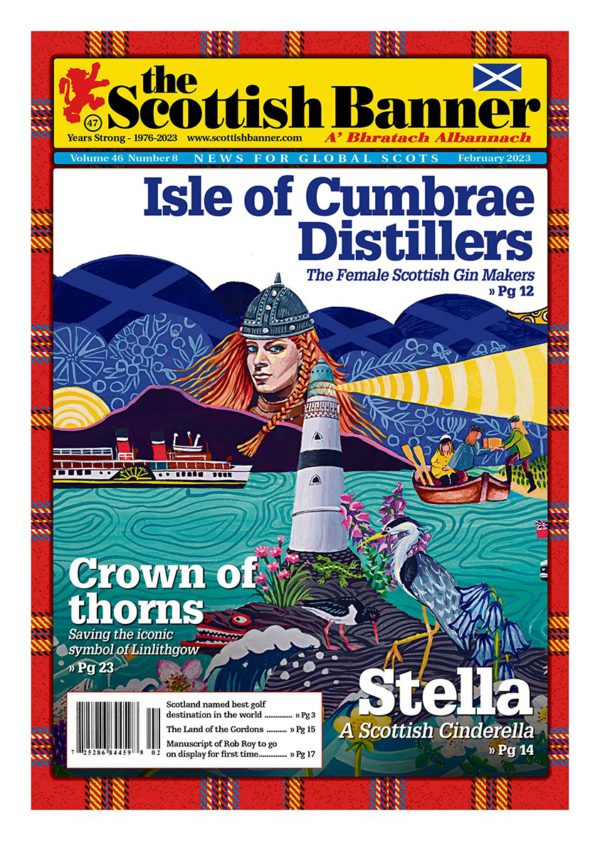
On Scotland’s Ayrshire coast lies the Isle of Cumbrae, just a short ferry trip from Largs. A group of five international women have come together to create the islands first gin distillery called Isle of Cumbrae Distillers. Bronwyn Jenkins-Deas from the team spoke to the Scottish Banner on building a new business during the pandemic, how a women led business is contributing to the community and just why visitors to Scotland should be adding Cumbrae to their travel plans.
Think distilling in Scotland and most will think of whisky, however Scotland boasts around 100 gin distilleries and produces 70% of the UK’s gin. What is it about this industry that excites you and what would you say sets Scottish gin apart from others?
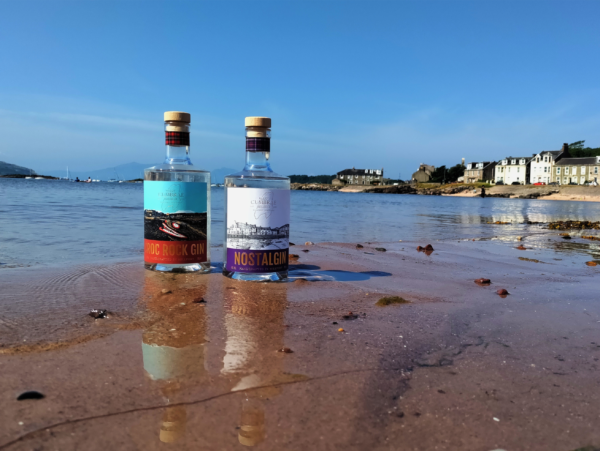
The industry in Scotland is very strong, I think the last take was about 106 gin distilleries in Scotland itself. There are benefits to being a gin distiller in Scotland rather than in other markets. For example, if we were distilling in British Columbia, in Canada, you could not operate a distillery unless you were actually fermenting the alcohol and there is a huge complex process that goes on to do that. The Scots look at things more efficiently and the vast majority of gin distillers in Scotland do not make their own alcohol and most use a central hub in England where they ferment alcohol and bring that fermented alcohol to Scotland.
Around 95% of Scottish gin makers are bringing in the fermented alcohol and then using their own botanicals and distilling in Scotland. The gin industry is very creative in Scotland, and we get to concentrate on that specifically. The industry is also quite wonderful in terms of supportiveness. We felt at the beginning we may be laughed off as frauds, but the exact opposite has happened, people have really supported us. People have loved our story and feel it is unique.
The Isle of Cumbrae Distillers is quite unique, being one of the few all-female owed distilleries in Scotland. How do you see women taking on a greater role in what is a male dominated drinks industry? Also do you think a female led business can offer something unique to the industry?
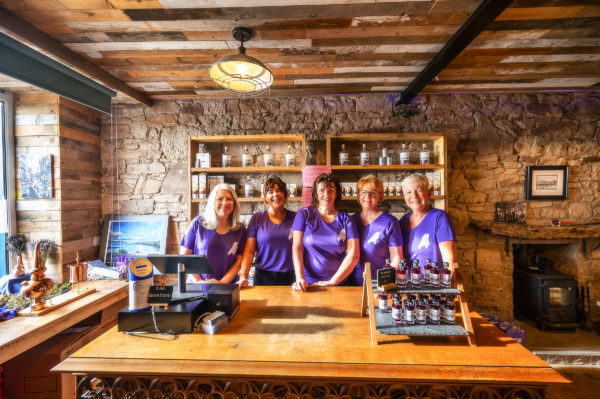
We came into this business as one of the very few women owned distilleries. There are already quite a few women in the industry, but not necessarily owners. We all came in with a bit of age, except for one member of the team, we are all in our 50s and 60s and with no prior experience in the drinks industry. We come from quite diverse backgrounds and with a great deal of life and business experience but none in the gin industry. There are a few exceptional women in the gin industry such as Hendrick’s Gin Master Distiller Lesley Gracie. There is also a group of women in the Isle of Jura, which is certainly much more remote than Cumbrae, and there are three younger women running that distillery.
We also represent the gin drinkers, if you look at the persona of a gin drinker it is mainly women who are 45-65, and we fit perfectly into that. I am not sure if I would say we are trailblazers because we are women in the industry, but we certainly are due to our age. At the end of the day, it does not matter if you are a man or a woman, in this industry you must have an angle to your enterprise in order to be successful. Now we are also looking at a USA expansion and partnering with a US distillery to have our product available to the US market.
The team behind the gin is quite international hailing from the UK, Canada and the USA. Can you tell us how all your roads collided to meet on Cumbrae?
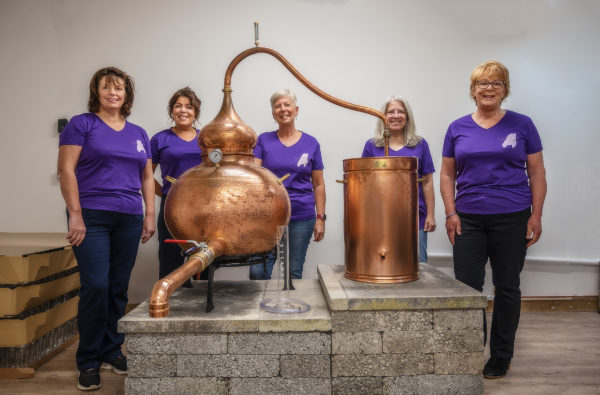
We all met at a bar and began chatting about having a distillery on the island. As the night went on the five of us were all excited about the prospect of the island having its very own distillery. We thought well it can’t be that difficult and we have the time, let’s do it! We then did a business plan, and each invested into the idea and began to move forward. Looking back, it was probably all a bit naïve because had we known what we were getting into we may not have kept pushing ahead.
The idea of launching a gin brand grew from the need of Millport Town Hall being in desperate need of repair. The Isle of Cumbrae Distillers intends to give back to and support the local Millport community. Can you tell us more?
What we are doing for our community is really what drives us. The Isle of Cumbrae may be Scotland’s most accessible island but it is on the depravation list, meaning it is so small that it cannot sustain industry. It relies 100% on tourism as it has so few businesses and having the distillery there has been a boom for the island. The Town Hall in Millport was built in the 1800s but had closed in 2015. It has become derelict and repair costs need £3.2 million to restore. The distillery started as a way to help raise funds to support the campaign to save the historic building.
When we launched Restoration Gin, it was to celebrate the restoration of the Town Hall. A portion of all sales of restoration Gin goes back to supporting the Town Hall. I am hoping we entice other businesses to come to the island and make a go of it and help build the islands economy and community.
You launched your first gin in 2020 while the world was grappling with the pandemic. Was the timing of the launch good or a challenge for the business?
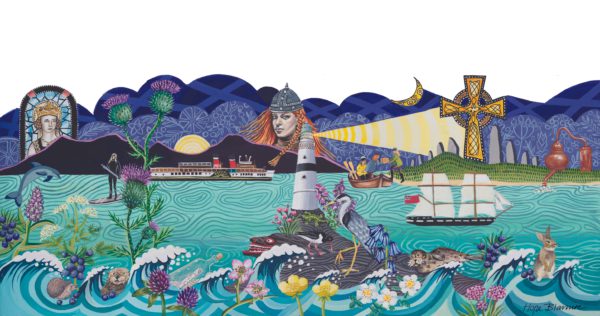
We incorporated the business in October 2019 with all the best of intensions and then of course March 2020 changed the world. What was interesting about that however was it did work out to our benefit. It gave us time to learn the distilling process, how to run a business and learn about a very complex sales and marketing side that comes with the drinks industry. We were able to concentrate on how to start this business up.
We did a great deal of work but also surrounded ourselves with people who could help us get it done. For us, launching the business during the pandemic was not a bad thing. We even did a crowdfunding campaign which was pivotal for us and helped raise £25,000 and had it not been for the pandemic we would have not raised that money.
Running a business on a Scottish island must be so very important for the local economy but also have its own unique set of challenges. Can you tell us what you and the team have had to overcome and learn about in becoming an island-based business?
There are many challenges, but we are most dependant on the weather for the ferries. For example, our spirt can only go on one ferry a week that handles dangerous goods. Couriers can take days to collect something from us. Getting things such as bottles you pay a premium to get it and the logistics can be also quite complicated. If you live on a small Scottish island there will always be 50% for you and 50% against you, and people were hedging bets if we were actually going to be successful.
However, a few days before our launch virtually the entire island got behind us with all the pubs selling our gin. However, at our opening the island ran out of tonic! The island really is now wholly behind us as they can see the value of the distillery. It has brought more visitors to the island and our goal is to help increase tourism. We are in an enviable position as most of us have retired and we are doing things a bit different than if we were just starting out.
We want to create a legacy more than anything and creating employment for young islanders, because most leave as soon as they finish high school. So, we are trying to create new employment and skills opportunities. We want to make a significant contribution to the island, and I think we can do that.
Along with the gin you have launched your very own tartans, what was that
process like and how important is it for your brand to have a tartan?

Of the five of us none of us are Scottish, but our husbands are. When we looked at the brand we did so with outside eyes. We thought what would we want to see, and we immediately felt tartan represented Scotland. We developed a tartan online and worked with an Edinburgh based company to get it print ready. We then reached out to the Scottish Register of Tartans and registered the Nostalgin and Maura tartans and will be registering our other tartans soon.
The Isle of Cumbrae is regarded as Scotland’s most accessible island to visit. Can you tell us what you love about the island and any suggestions for those who have yet to visit?
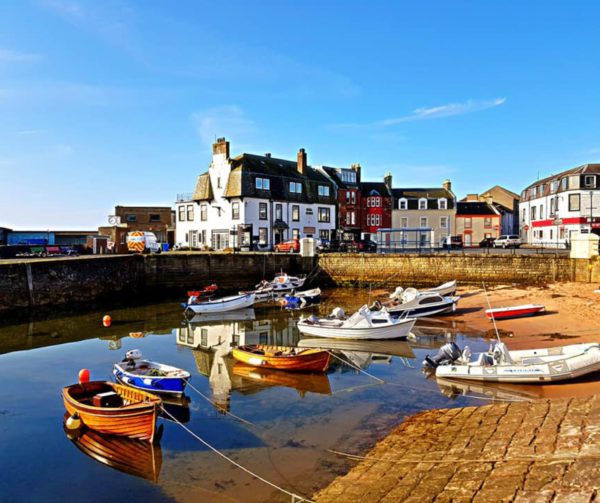
Millport is a small place, and the entire island has a population of about 1,200 people. It really is Scotland’s most accessible island; it is only 8 minutes by ferry from Largs. You do not even need a car to come here. The island is about 10 miles around so you can walk or cycle it with ease. I can absolutely say for Americans and Canadians it is an easy place to visit as they are used to driving on the other side of the road. You can come here quite easily by public transportation and not need to worry about driving. From Glasgow it is only 45 minutes to Largs so makes for a really easy day trip.
Cumbrae is called the island of a thousand bicycles because the island is so flat, and we have bike hire facilities. It takes around 2 hours to cycle around the island. We have beautiful bays and lovely beaches around the island and on a nice day it offers great views of the Isle of Arran and Bute. We also have the smallest cathedral in the UK, the Cathedral of the Isles is in Millport and was built in the 1800s by the Earl of Glasgow and is absolutely beautiful.
For more information about the Isle of Cumbrae Distillers visit:
www.isleofcumbrae-distillers.com
Artist Hope Blamire
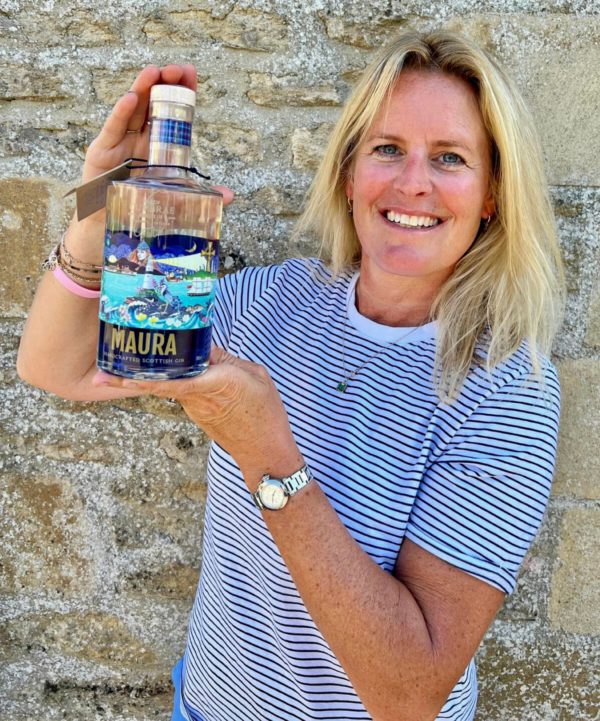
Meet Hope Blamire, the Maura Gin label artist, a celebrated Scottish painter (and self described gin enthusiast!), whose vibrant artwork captures the coastal landscapes and glistening waters of the West Coast of Scotland. Her artwork is featured in galleries and shops across the UK, and in homes throughout the world.
Born in Ayrshire, Hope studied Illustration and Printmaking at Duncan of Jordanstone College of Art in Dundee. She lived in France, Canada, Egypt, and Malawi, where she taught art before returning the UK. Hope now lives in Bath with her husband and sons, but her ‘spiritual’ home will always be the West Coast of Scotland. She is a highly regarded and exceptionally talented artist, a passionate campaigner for responsible tourism and a champion fund-raiser for several important causes.
Learn more at: www.hopeblamire.com

